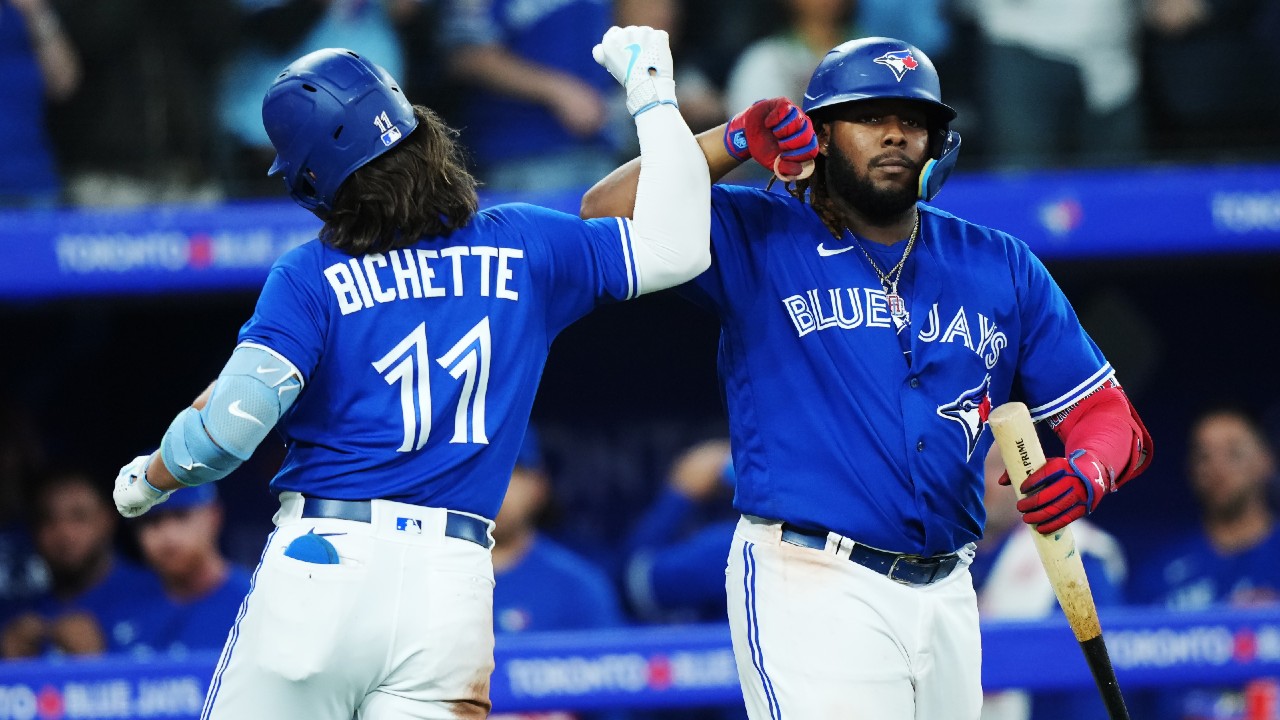Sports
How Yusei Kikuchi quietly became a frontline, big-league starter – Sportsnet.ca

June 11, 2024, 11:31 AM
During his time in Toronto, Yusei Kikuchi has gone from a source of frustration and concern to a genuine fan favourite among the Blue Jays faithful.
The fact he’s gone from a negative WAR pitcher to a reliable member of the rotation has played an enormous role in that, but so has information that’s trickled out about Kikuchi over the last couple of years.
His supposed tendency to sleep for more than half the hours of the day, while simultaneously reading over 200 books per year makes him a compelling character. He’s added to his folk hero credentials by plying his teammates with fine Japanese whisky, and getting a custom strikeout song based off his name.
On Sunday an outlandish obstruction play that made him want to “create a little hole and hide inside it” just added more fuel to the idea that Kikuchi is built different.
The intrigue building around the veteran southpaw has distracted from the fact that he’s not only thriving for the Blue Jays, but giving them ace-level production. That might sound hyperbolic, but since June 11 last season he ranks fifth among all pitchers in fWAR (4.8).
A number like that is impressive for any starter, but it’s truly remarkable for a pitcher who was a liability to his team as recently as 2022. Not only is the extent of Kikuchi’s improvement surprising, the way he’s brought it about is also a head-scratcher.
When the left-hander came to the Blue Jays, he had a reputation as a pitcher who wielded impressive stuff but struggled to harness it. He posted high walk rates above league average in each of the seasons before signing with Toronto, then got even worse in 2022.
In that season he had the highest walk rate among the 140 pitchers who threw 100 innings or more (12.8 per cent) and it was more than a percentage point higher than the second-worst mark (Michael Kopech’s 11.5 per cent).
Now his control has gone from a debilitating issue to a genuine asset. In the last calendar year his walk rate (5.8 per cent) is the lowest among Blue Jays starters and the 15th best in the majors among pitchers with 150 innings pitched.
Since the beginning of the 2024 season, it’s been even better than that (5.0 per cent), leading to a season-by-season walk rate graph that looks like this:
When the Blue Jays signed Kikuchi it was hypothesized that his raw stuff was so compelling that all he had to do to post excellent results was get it under control. The way his ERA has mirrored his walk rate over the past four seasons lends credence to that idea.
While that describes the situation, it does little to explain it. How has Kikuchi suddenly cut out the walks that used to kill him?
Looking at how Kikuchi has changed on a pitch-by-pitch level provides some answers. Below is a summary of how often he’s thrown his fastball in the zone — and its total strike rate — during his Blue Jays tenure.
Kikuchi is pounding the zone with fastballs this season at a clip unlike anything we’ve seen before — but his two breaking balls are an important part of the story as well.
Back in 2022, he only threw six total curves while he went to the slider 30.1 per cent of the time. This season he uses his curveball almost twice as often (27.6 per cent) as his slider (15.5 per cent).
That curveball has gone from a virtually non-existent pitch in 2022, to something Kikuchi was discovering in 2023, to a top-notch secondary weapon this season. Its improvement has been part of his development as a strike thrower as it’s an offering he’s more comfortable putting in the zone than his slider.
Even the pitch Kikuchi has the least success throwing for strikes — his changeup — has seen an uptick in strike rate over the last three years, from 48.2 per cent to 50.7 perc ent to 53.1 per cent.
The left-hander shows very little interest in putting that offering in the strike zone (it’s been off the plate 71.7 per cent of the time in 2024), but he’s getting hitters to chase on it more frequently than in prior years. Perhaps because hitters are seeing so many fastballs in the zone from Kikuchi when they mistakenly read a heater out of the hand they are going into swing mode.
One example of this phenomenon came in his recent start against the Pittsburgh Pirates on May 21. Kikuchi got two strikeouts on the changeups outside the zone where opposing hitters had bat speed readings of 72 m.p.h. or more (above the MLB average of 71.4 m.p.h.).
If the lefty didn’t have such a hard fastball that was consistently in the strike zone he probably wouldn’t induce such hard swings on changeups outside of it.
Kikuchi’s pitch mix is more conducive to strike throwing than it has ever been, and everything is working off an aggressive use of his heater. There haven’t been any sacrifices associated with that aggression either as the southpaw’s HR/9 (0.87) is way below his career average (1.57) and his contact-management numbers have not worsened from putting more pitches in theoretically hittable areas over the plate.
After Kikuchi floundered in his first season with the Blue Jays, it wasn’t difficult to imagine him bouncing back to some degree, thanks to his impressive stuff. The lefty becoming one of the most productive starters in the majors — and doing so on the strength of his control – would have been impossible to project.
That turnaround is truly a rare and impressive accomplishment, perhaps even more so than sleeping 13 hours a day.








)






